Blue Carbon Enterprises Lessen Climate Change Damage
The Takeaway: Coastal wetlands research, restoration, tools, data, workshops, and partners—NOAA brings every blue carbon asset to the fight against climate-change-related hazards and harm.
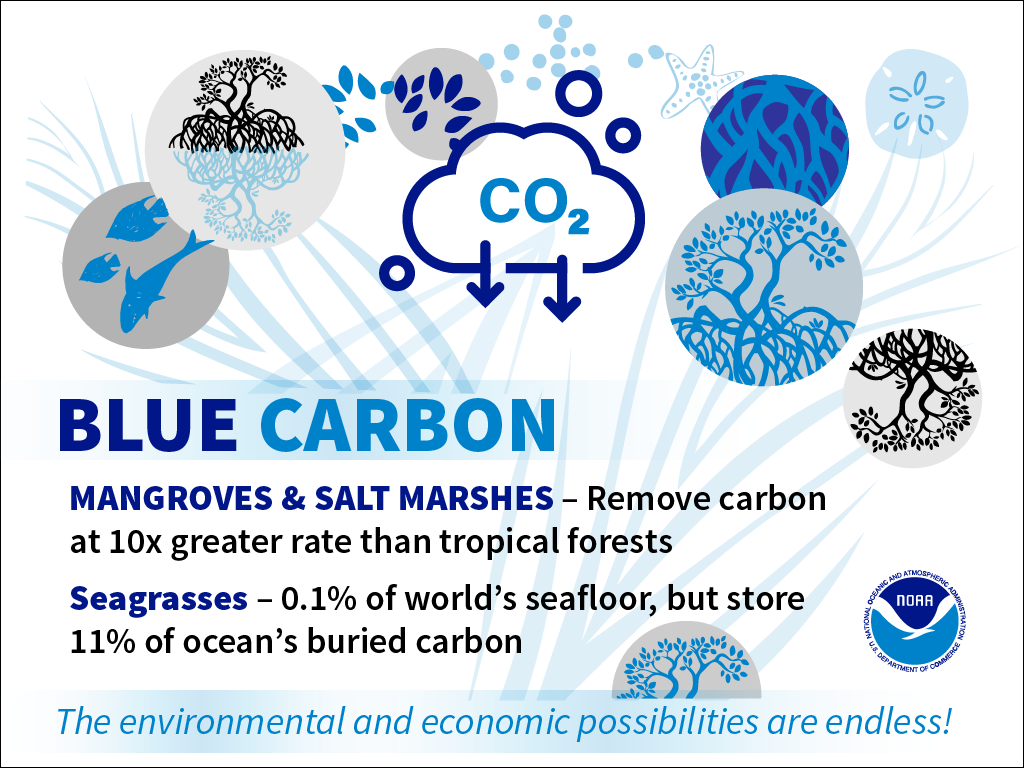
Looking out onto a tranquil coastal marsh, many people would never guess that, beneath its windswept grasses, plants buried deep in the soil have captured and stored vast amounts of carbon dioxide and other greenhouse gasses.
In the race to lessen the damage of climate change, this “blue carbon” held in the nation’s coastal ecosystems is a powerful ally. It incentivizes restoration projects and can be traded on global carbon financial markets, which balance projects that feature emissions with contributions that take carbon out of the atmosphere.
Blue carbon also plays an important “green” role in the U.S. Infrastructure Investment and Jobs Act, which directs more than $12 billion dollars to advance carbon capture and removal projects.
NOAA’s National Estuarine Research Reserves are leading the way on the blue carbon front, joined by partners across the public-private spectrum that include the nonprofit Restore America’s Estuaries.
Research reserve leaders believe so much in applying blue carbon science that their Science Collaborative program (co-led by the University of Michigan) has helped fund most of the projects described below. What’s more, NOAA’s land cover program ensured that blue carbon is included in the U.S. greenhouse gas emissions inventory.
The following examples represent ongoing blue-carbon-related efforts throughout the research reserve system.
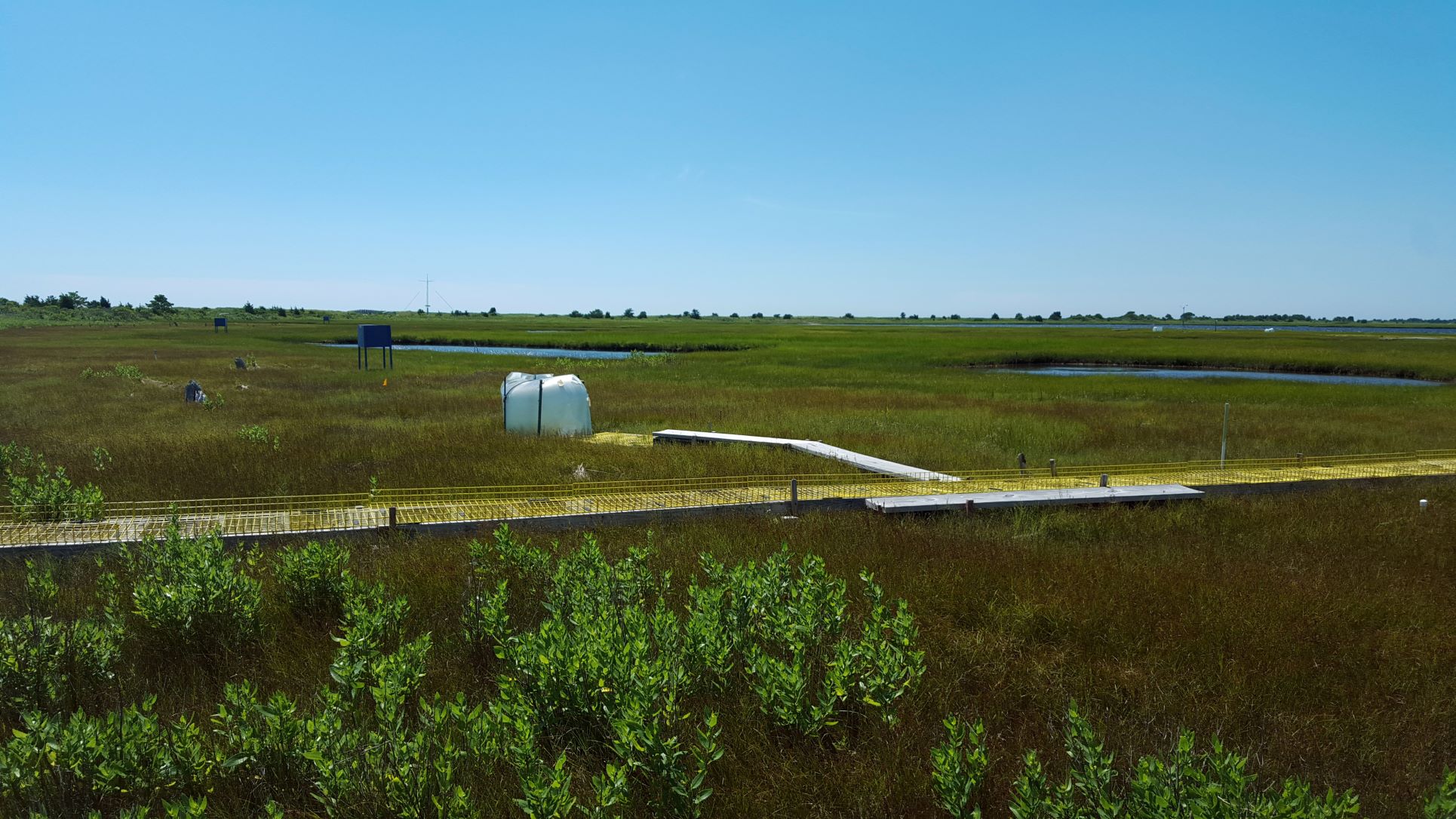
Photo credit: Kris Bayne
Pioneering products travel far
- “Bringing Wetlands to Market,” created by the Waquoit Bay Research Reserve in Massachusetts, was the first-ever U.S. tool and guide on marketing the blue carbon stored in coastal wetlands.
- The Mission-Aransas Research Reserve in Texas adapted “Bringing Wetlands to Market,” presenting it to 318 participants in three cities and four additional research reserves in Florida, Louisiana, and Mississippi. A video gives viewers “the skinny” on blue carbon.
- In Massachusetts and at least five other states, a blue carbon curriculum featured through Teachers on the Estuary workshops has reached 100-plus teachers who have educated more than 2,000 students.
- The Waquoit Bay Reserve and their partners discovered that restoring tidal flow to restricted or degraded marshes reduces emissions of the greenhouse gas methane. These early methane findings have been studied by other reserves.
- Today, the reserve is partnering with the U.S. Environmental Protection Agency on a framework to help New England policymakers incorporate blue carbon considerations into state greenhouse gas policies.
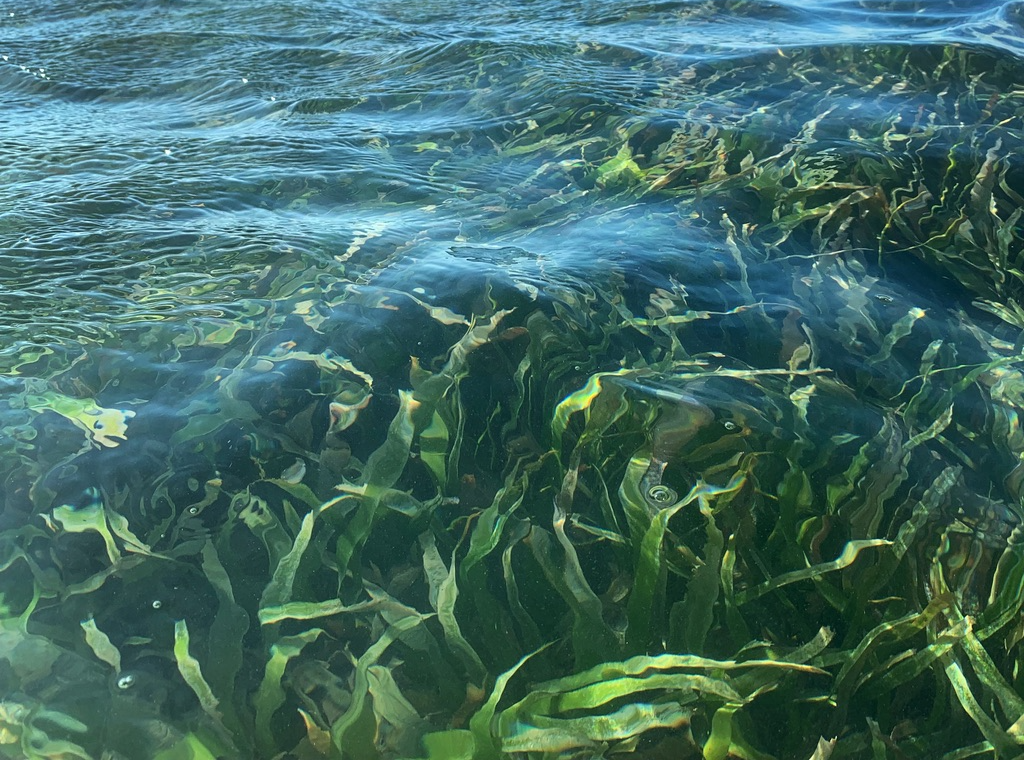
Photo credit: Ocean Conservancy and The Ocean Foundation
Reserve hosts carbon-offset “first” and mangrove restoration
- Last year, the Philadelphia Eagles pro football team agreed to restore seagrasses and mangroves at NOAA’s Jobos Bay Research Reserve in Puerto Rico as a way to offset carbon emissions stemming from team travel. The Ocean Conservancy and The Ocean Foundation are project partners.
- Another project, the Mangrove Coast Collaborative, has already begun to increase healthy mangrove forests at this reserve and the Rookery Bay Research Reserve in Florida. The collaborative solicits community input and then delivers maps, assessments, and decision-science insights.
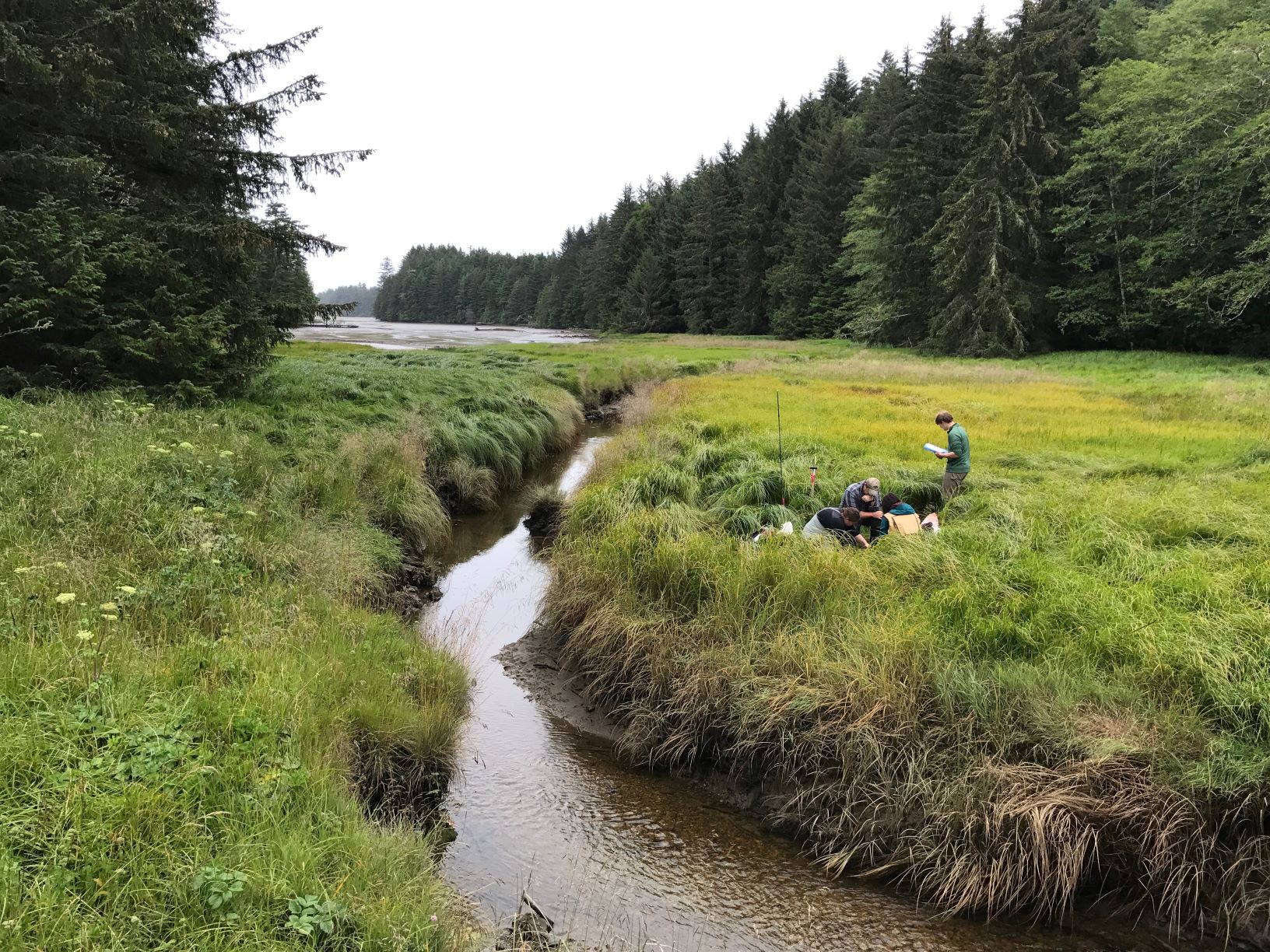
Photo credit: NOAA
Experts probe carbon storage and potential markets
- In 2014, the South Slough Research Reserve in Oregon and the Padilla Bay Research Reserve in Washington State helped to establish the Pacific Northwest Blue Carbon Working Group. Thanks to this group, people with a stake in the issue can view data on the carbon stored in Pacific Northwest tidal wetlands.
- The group continues to add to the blue carbon database; quantify blue carbon stocks in major coastal habitats; explore carbon-market finance projects; and investigate the effects of greenhouse gas storage and emissions in tidal wetlands.
- In a related project, a recipient of the Margaret A. Davidson Graduate Fellowship at the Padilla Bay Reserve is studying how connected watersheds and other environmental conditions affect carbon storage in seagrass meadows.

Photo credit: Kachemak Bay Reserve
Community uncovers the power of peatlands
- Peatlands in the marshy Kenai Lowlands of Alaska store tremendous amounts of carbon. A pilot project on carbon storage that the Kachemak Bay Research Reserve conducted with the Smithsonian Environmental Research Center has stirred great community interest in blue carbon research, and estimates of storage capacity.
- The reserve also used the “Bringing Wetlands to Market” model to engage people with a stake in the issue, producing outreach and communication tools, Kenai wetland maps, and other aids.
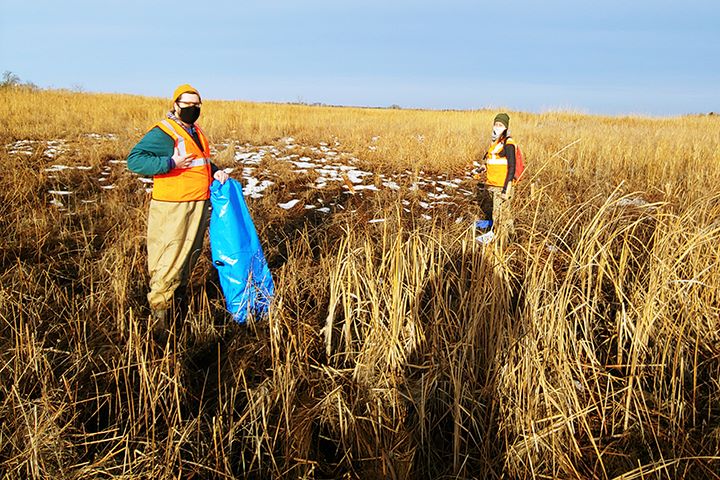
Photo credit: Delaware Research Reserve
Region delves deep on greenhouse gas research
- The Delaware Research Reserve is investigating how the prescribed burning of phragmites (the tall grasses shown) affect the storage and flux of carbon stocks. The reserve also hosted a study by three NOAA Hollings Scholars that explored how coastal carbon stocks varied in two Delaware tidal marshes.
- This reserve, and 14 others, have partnered with the Smithsonian Environmental Research Center to gather information on wetland concentrations of elements that include the greenhouse gas methane, sulfate, and salinity. Their findings will inform maps on the NASA Carbon Monitoring System, which helps people report, monitor, and verify carbon stocks and fluxes.
- Not too far away at the Chesapeake Bay-Maryland Research Reserve, a recipient of the Margaret A. Davidson Fellowship is evaluating the potential of natural and restored tidal marshes to store carbon.
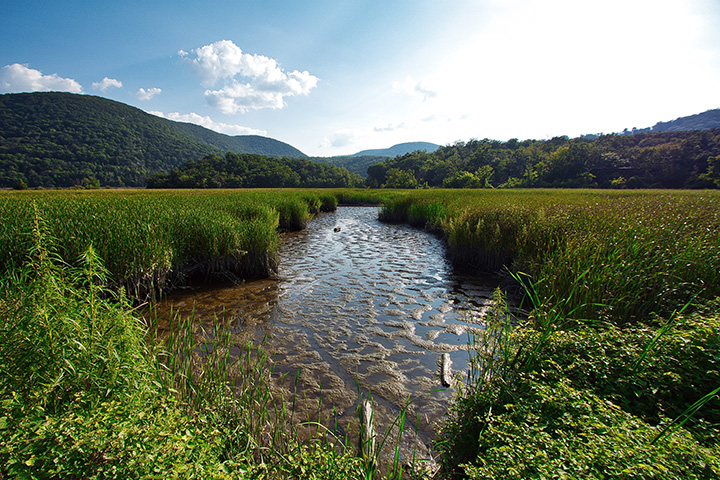
Photo credit: Ben Von Kemperer
Investigations will benefit Hudson River and beyond
- In New York State, the Hudson River Research Reserve is taking part in a multi-partner project to map and model blue carbon storage and resilience potential in the tidal wetlands of the Hudson River Estuary, Long Island, and New York City. Additional partners include the state’s Office of Climate Change and the U.S. Climate Alliance.
- The carbon-storage capacity of Iona Island in the Hudson River is a potential area of investigation for the reserve’s scientists, who hope to study how much carbon is sequestered by different river marsh types. (2022)
Partners: California Coastal Conservancy, Cape Cod National Seashore, Environmental Sciences Associates, Florida International University, Friends of Herring River, Geomatics Research LLC, Graham Sustainability Institute, Gulf of Mexico Coastal Training Program Initiative, Institute for Applied Ecology, Manomet Center for Conservation Sciences’ Marine Biological Laboratory, NASA Carbon Monitoring System, National Estuarine Research Reserve Association, New York State Office of Climate Change, Ocean Foundation, Oregon State University, Pacific Northwest National Laboratory, Philadelphia Eagles, Portland State University, Puget Sound Partnership, Restore America’s Estuaries, Silverstrum Climate Associates LLC, Smithsonian Environmental Research Center, TerraCarbon, The Climate Trust, U.S. Climate Alliance, The Ocean Conservancy, U.S. Fish and Wildlife Service’s Coastal Program, U.S. Geological Survey’s Woods Hole Coastal and Marine Science Center, University of Rhode Island, Verified Carbon Standard, Washington State Department of Natural Resources, Weeks Bay Foundation, Waquoit Bay Reserve Foundation, and the following NOAA programs and offices: Digital Coast; Hollings Scholars; Margaret A. Davidson Graduate Fellowship; National Centers for Coastal Ocean Science; Office of Habitat Restoration; and the Apalachicola Bay, Delaware, Chesapeake Bay-Maryland, Grand Bay, Hudson River, Jobos Bay, Kachemak Bay, Mission-Aransas, Padilla Bay, Rookery Bay, South Slough, Waquoit Bay, and Weeks Bay Research Reserves
Infographic Text: Blue carbon illustration with the tagline “The environmental and economic possibilities are endless!” Includes the following facts: Mangroves and salt marshes remove carbon at 10X greater rate than tropic forests. Seagrasses are 1% of the world’s seafloor but store 11% of ocean’s buried carbon.
PRINT